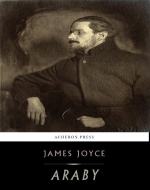|
This section contains 2,540 words (approx. 9 pages at 300 words per page) |

|
SOURCE: “The First Trinity,” in The Cracked Looking Glass: James Joyce and the Nightmare of History, Susquehanna University Press, 1992, pp. 23–37.
In the following excerpt, Wachtel views “Araby” as the third story in a trilogy—the other two being “The Sisters” and “An Encounter”—and deems it an important transition to the other stories included in Dubliners.
Although they depict the meanness, entrapment, and blindness of the citizenry, the first two stories of Dubliners are actually about the discovery of those same qualities in the protagonists. “Araby,” third in the series, is the final example of such self-scrutiny before the authorial voice presents the victims and the struggling might-have-beens of Dublin life.
Until the protagonists of the first stories discover and acknowledge their errors, it seems to them possible to direct their disapproval at others. In “The Sisters,” the boy resents Old Cotter and refuses the offering of the...
|
This section contains 2,540 words (approx. 9 pages at 300 words per page) |

|


